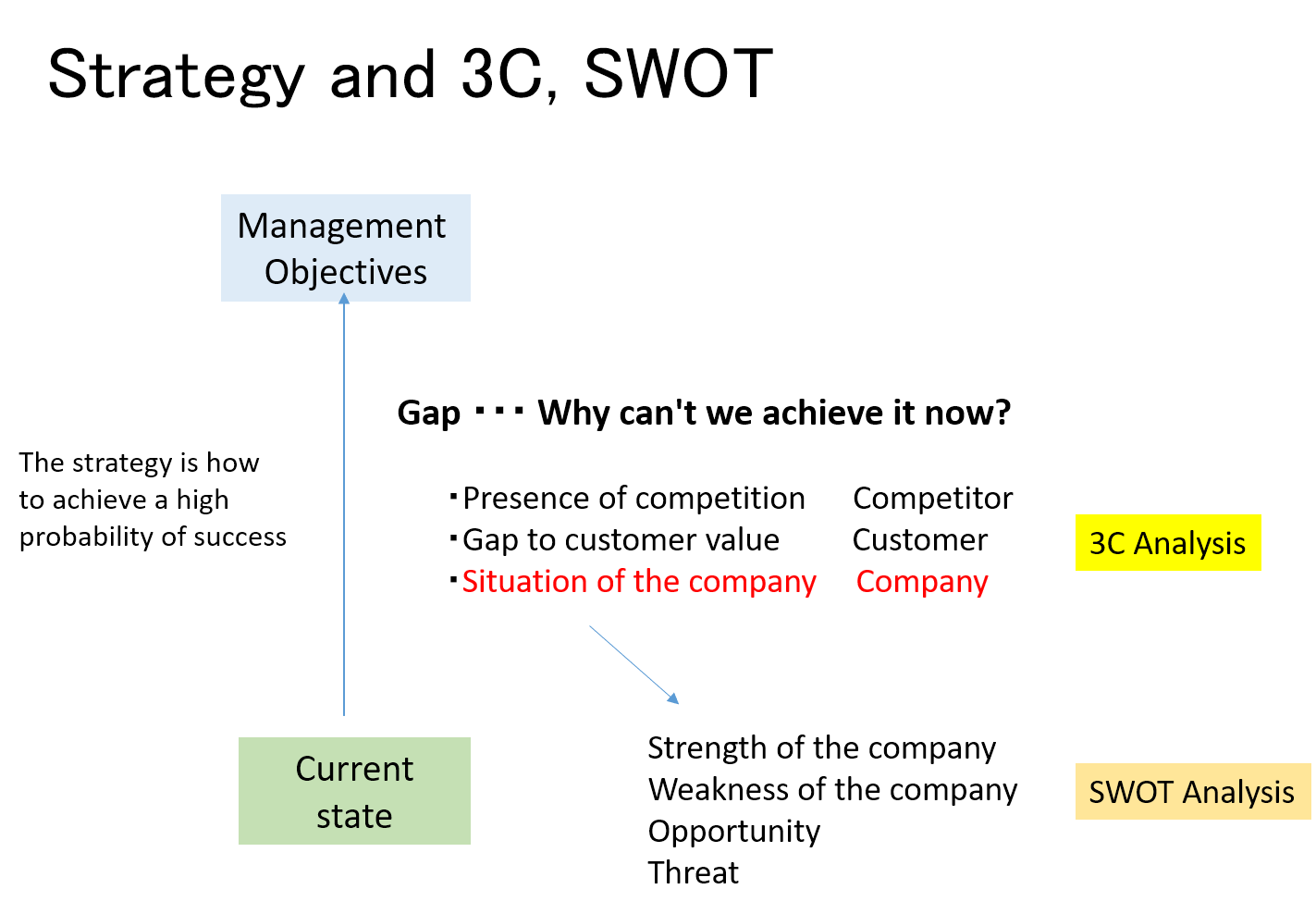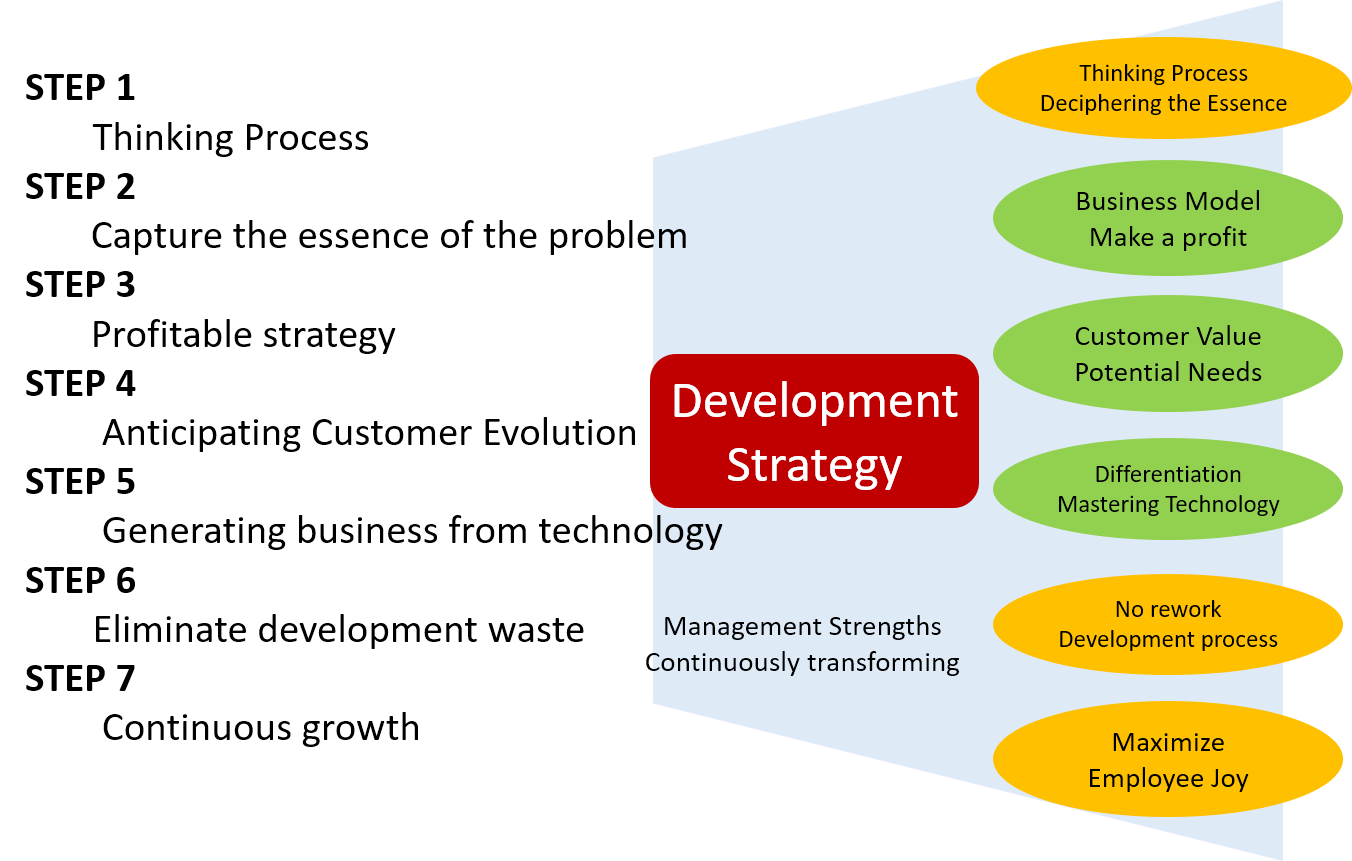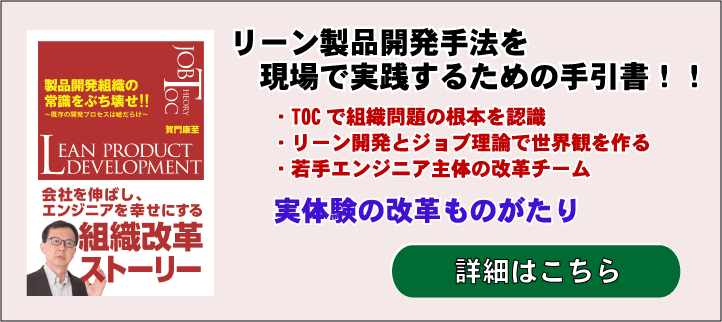
Development organization executives’ concerns in strategic planning
- Few people understand the essence of how to formulate strategies such as technology strategies.
- Too much effort is put into developing and following up on existing products, making it difficult to develop medium- and long-term strategies.
- They formulate strategies and proceed with them, but often fail to achieve their strategic goals.
At Futureship, we have experience as consultants in helping various companies develop management strategies, medium-term management plans (mid-term plans) for development organizations, and technology strategies, and we can help you develop strategies for your company.
Contents of the text
Understanding the three key elements of strategic planning for development organization
There are three basic key elements of strategy
- Diagnosis (analysis)
- Basic policy
- Action
Of these, only the basic policy part is sometimes considered “strategy,” but diagnosis (analysis) is essential for deriving the correct basic policy, and action is inseparable from a good strategy, because a strategy without action will be a pie in the sky
Diagnosis (analysis)
There is a saying in Sun Tzu’s Art of War: “If you know your enemy and know yourself, you will not be in danger in a hundred battles.
Diagnosis (analysis) in strategy in the business world involves analyzing the competition, the company, and the customer. (3C analysis)
In the analysis of the company, we look at its strengths and weaknesses, and what headwinds and headwinds are blowing (SWOT analysis).
The 3C’s stand for Company, Competitor, and Customer.
SWOT is an acronym for Strength, Weakness, Opportunity, and Threat
In both analyses, the 3C analysis is used to firmly grasp the gap between the current situation and the business goals, and to analyze why the business goals are not being achieved now from the perspectives of the company, competitors, and customers, while the SWOT analysis is used to analyze the company’s situation in more depth.
These analysis methods are fundamental to the planning and implementation of technology and management strategies.
In an organization that continuously reviews its strategies, there is a danger that these analyses will become a skeleton or that the strategies will become results-oriented, resulting in meaningless strategies.

In addition to 3C and SWOT, there is also analysis using the Five Forces (5F) from Principles of Competition (by Michael Porter) and a framework that looks at 3C in the context of the times.
The TOC (Theory of Constraints) framework is also used to analyze key issues within a company, and to find the root problem (bottleneck) in the organization by analyzing the chain of bad symptoms.
Basic policy
This is the key part of strategy
Based on the results of the analysis, we decide on the major direction to take in order to beat the competition or break through the status quo.
However, there is no right answer to this basic policy, and it depends on the ideas of the individual.
When we think of famous strategists in the business world, Jeff Bezos and Steve Jobs come to mind, but there is no formula to derive the basic policy from the diagnosis (analysis)
However, there is no formula to derive the basic principles from the diagnosis (analysis). If I were to follow my predecessors, I would say to be simple and surprising
It’s not something that anyone would have thought of, and it’s not difficult to do.
Action
A strategy is not the same as a goal
Strategy is also not about committing to a result
It is important to change the situation by taking actions to increase the probability of winning, improve the battle situation, gain an edge over the competition, and create a situation where you cannot lose.。
I have seen many development organizations and feel that there are common issues.
For example, in order to effectively develop many models at the same time, the division of labor and specialization has been promoted to the point that there are hardly any people who understand the whole process anymore, and the organization is now cycling through quality problems and dealing with them. Also, as the number of people involved in the development of models has increased, the number of interfaces between people has exploded, and this has led to communication-related problems and chores that take up a lot of time and reduce motivation.
As a result of detailed analysis, let’s say that the basic policy is to change the organization to one where each engineer thinks and acts in terms of customers, company profits, and effective use of technology. (Actually, I think this basic policy can be used in many companies.)
After considering these common issues and the basic policies that can be applied, I came up with seven steps for our development innovation.

In order to achieve the basic policy, it is necessary to understand the differences from the current situation, and furthermore, based on the circumstances and constraints within the organization, to put them into an action plan to achieve the goal in the fastest way possible.
An action plan does not necessarily have a 100% chance of success
The action plan based on the strategy should also have a back-up plan in case it does not work, milestones to determine if the plan needs to be revised or not, and conditions for deciding to change or withdraw.
Pitfalls in Strategic Planning
Let me consider some examples of bad strategies that I have seen in several companies.
I think they are all common pitfalls, and my sense is that about 70% of manufacturing companies have at least one of the following three bad examples.
- Misunderstanding that setting high goals is a strategy
- Listing issues and trying to attach a solution to each one
- Not addressing the critical issues
1.Misunderstanding that setting high goals is a strategy
As a top manager, it is not a bad thing to set high goals
However, I sometimes see managers who think that “setting high goals = good strategy.
High goals sound good to the casual observer, and it is easy to make the mistake of thinking that a company that sets high goals appears to be a good company.
I know several companies that always set high numerical targets in their mid-term management plans, but have never achieved them in the past ten years.
They don’t have a strategy in the true sense of the word.
2.Listing issues and trying to attach a solution to each one
think there are so many companies like this.
They make a kind of list of issues and write them in a spreadsheet. Maybe 10 or 20 issues are listed, and next to each issue is a “response plan”, and for each issue, a plan is set up.
In my opinion, we are literally drowning in measures.
They are not analyzing the problem. They are trying to cover up the “phenomena” that are occurring, which is a cop-out.
Such companies make a list of issues and countermeasures at the beginning of the fiscal year, and make a one-year (or six-month) action plan, but after a year, some of the measures have been implemented, but in most cases, almost nothing has changed in terms of the important issues.
3.Not addressing the critical issues
As is common with the pitfall in #2, there are cases where serious problems are omitted because the problem is not analyzed and only the phenomenon that is occurring is pursued.
They try to deal with the lack of human resources, the delay in the development schedule and the need for countermeasures, and the unusually high number of overtime hours.
If we try to capture the essence of the problem, the root problem may be, for example, that the productivity of each engineer is low, or that the quality of project leaders is declining. (Just as an example)
The root problem that is causing the bad symptoms is the most important problem, but instead of addressing it, we find ourselves looking in the opposite direction, trying to rotate personnel, reviewing the priorities of development models, or strengthening the no-overtime work day.
What do you think? If any of these ideas come to mind, I recommend that you rethink your strategic planning process.
Things to keep in mind in strategic planning
If you have fallen into the “pitfalls of strategic planning” mentioned in the previous section, you should get out of it.
Other than that, there are four things to keep in mind
- Strategy is something that is surprising and simple.
- Organizational problems do not occur in isolation.
- Organizational problems are caused by one or two bottlenecks
- Strategy implementation is fraught with obstacles and side effects/li>
1.Strategy is something that is surprising and simple.
I believe that a long and complicated strategy is not a good strategy. It should be simple, in other words, to take immediate action where it matters most.
It is not easy to derive a basic policy from a diagnosis (analysis), but it should not be impossible.
When planning a strategy, I would like to keep in mind that it should be simple and stick to what is important, and include elements of surprise that no one else has thought of.
2.Organizational problems do not occur in isolation.
Organizational problems should not be thought of as occurring in isolation, but as a chain of multiple phenomena.
Be persistent in your analysis until you have deciphered the complexities of the problem and arrived at the essence.
3.Organizational problems are caused by one or two bottlenecks.
Be aware that complex problems usually boil down to a small number (one or two) of root problems
If you only look at the surface problems, you will end up with the wrong strategy.
Also, as you continue to reform and improve, this bottleneck may move, so be careful there as well.
4.Strategy implementation is fraught with obstacles and side effects/h3>
Obstacles and side effects are inevitable in any strategy-based action plan.
If you deal with obstacles and side effects only after they occur, you will not be able to achieve your strategic goals.
The usual management practice is to eliminate foreseeable risks in advance.
Once the basic policy has been established, it is important not to rest on one’s laurels, but to keep one’s eyes open until actual action is taken to achieve the strategic goals.
★Consultant to Futureship’s strategic planning
- Lectures or workshops on the essence of strategic planning
- Advice on planning activities for your strategic planning team
- Support for your company’s strategic planning activities from start to finish
If you are interested, please fill out the form below. We will contact you.



